The rice-farming practice of the Cordilleras has created rice terraces that are now considered a wonder in agriculture. But how significant are they in today’s modern practice and culture?
The old agricultural cycle in the Mountain Province, particularly in the Municipality of Sadanga, starts and ends after the planting season called Chinamey. Tak-chang, which actually means getting out of the field, signifies that the last season of the agricultural calendar which is the rice-planting is done. After the Takchang every household will have the Ap-apoy, a thanksgiving for having hurdled the planting season, the most difficult season of farming. During the Ap-apoy, each household will sacrifice a chicken to the spirits in their respective fields to bless their plants. After the Ap-apoy comes the Gup-khupo, a family gathering in their respective homes.
After the Gup-khupo, the elders will declare a Te-er. Te-er is a rest day after or before a grueling activity, signifying a pause, an end, or indicating the significance of the season. The Bontoc term Tengao is more popular to most. This may last for either one or three days; but always, this is a rest day or non-working holiday for the whole community. One who insists in working during Te-er is not given double compensation but is dished out a penalty.
In some cases, the elders may hold the Fvegnash after the Gup-khupo, the most festive of all the Te-er. Fvegnash is like the Gup-khupo of the whole community. The community will gather together in their Ator and have a community-wide celebration and thanksgiving with lots of dancing, beating of gongs, singing, and imbibing fvayash and tapuey. Back when there were no Christmas, Hero’s days, and Holy weeks, Te-er was the community’s holiday
The Sherdang follows the planting season. Sherdang is the time when the fields are turning golden brown as the rice ripens and harvest is in the offing. In some cases, Fvegnash/Begnas does not happen after Takchang but during the Sherdang. This is also a reason for thanksgiving for the awaited harvest and also a time to sacrifice to the spirits for a bountiful harvest.
Before the harvest, the community elders declare a Te-er for Kagkaat, a one-day none working holiday. Non-working, in a sense that they are not allowed to work in their fields to harvest their rice fields. However, they’re allowed to weed out their pathways in preparation for the Harvest. Kagkaat actually means to weed out.
During Te-er, elders would police around the community to inspect who went to work that day. This is called “inlapat”. If one person in the community is chanced upon working by other members, an uproar of screams will ensue and the guilty party will feel the pressure of the community. The guilty will be penalized either with a boar or other agricultural products.
Next comes the harvest season or Ani. After the Ani, the rice grains are dried then kept in their granaries called Agamang. Another Te-er is declared after the harvest.
Keshep is the second cycle in the agricultural calendar. The next timetable is to cultivate the fields for other plants like camote and other vegetables. With this system, the earth is recycled for the next season of Chinamey.
On colder days comes the Shaknit. This is the time for them to gather sugar canes and extract their juices to make fvayash, their local beverage. The fvayash will mature in time for the next Fvegnash.
After the camote and other vegetables are harvested from the fields, the soil will be prepared for another rice planting season. Another Te-er is declared. This Te-er before planting is the strictest of all. No visitors are allowed to come to the village and no villager in the community is allowed to work. Signs will be posted at all entrances of the community. Once an outsider enters, he will be penalized. After the Te-er, the next planting or the Chinamey ensues. After the Chinamey, another agricultural cycle begins.
The system helps establish unity among the people in the community. At the same time, it protects them and their agriculture from pests. If one does not adhere to the system, he will not only suffer the pressure of the community but his crops will also suffer from pests. In the old belief, this is a punishment from the spirits for his uncooperativeness. But the system has a different explanation in today’s scientific studies. Field rats live in a colony. When there are enough foods, they multiply. When there’s a scarcity of food, their numbers would dwindle.
When the plants start to bear fruit, the rats’ population also starts to increase. However, since the vastness of the field has been planted, no matter how fast the rats multiply their presence is barely felt by the farmers. And before their number increase to become an uncontrollable plague, the rice fields are already ripe for harvesting. The goods are kept in the agamang that are inaccessible to the pests. If someone did not follow the calendar and planted earlier or later than the rest, the bulk of the pest will feast on his field during the time it was the only one yielding fruit.
Their Panyao (taboo) beliefs also helped in the system. It served as a protector when the elders are not there to watch over them.
The system has helped protect the environment. They have developed an excellent symbiosis with nature. No one would go hungry since everyone has his own field to till and animals to raise. Their treasures are the abundance of food, land to till, and animals.
This was what the conquerors saw when they arrived in these mountains, yet they branded them as ignorant. They introduce the accumulation of monetary exchange as the real treasure. With their mindset changed, the people of the mountains began to abuse their lands to produce more. Their important inheritances found their ways in the halls of the affluent as decorations. They would try different systems like fast-growing rice seedlings so that they could convert more rice to the much-coveted symbol of wealth. The use of chemical fertilizers was introduced and it slowly affected the land. In many places, rice can no longer grow without the use of these chemicals. The old agricultural cycle has changed in many places. Some have abandoned their fields to find better ways to earn. Farmworkers decrease while other ventures increased. With fewer farmers, shortages of food are in the offing. Such is just one prize in the introduction of the so-called civilization.
But many places like Sadanga still adhere closely to the old system and they are proven to be an effective agricultural practice that will still work in the centuries to come. These people may not have enough money in the banks but they will never run out of daily necessities for their main treasures will always be what sustained their ancestors in the past, their farmlands. Carl C. Taawan
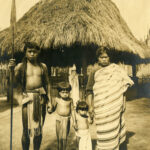 Igorots: The so-called savages of the Cordilleras
Igorots: The so-called savages of the Cordilleras  Od-odio, the Narra Tree Song
Od-odio, the Narra Tree Song  Baguio Creatives finding ways to rise above Pandemic
Baguio Creatives finding ways to rise above Pandemic  Baguio City Creative Christmas Trees
Baguio City Creative Christmas Trees 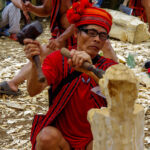 How a wooden spoon started a creative village
How a wooden spoon started a creative village  The Sagada Way
The Sagada Way  The Mountain Trail Thrill
The Mountain Trail Thrill  Baguio stages first Creative Festival
Baguio stages first Creative Festival  Wire Art, a miner’s lifeline
Wire Art, a miner’s lifeline 
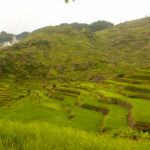
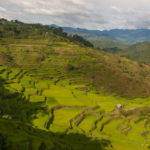
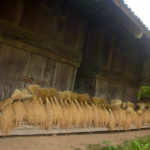
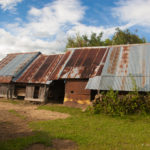
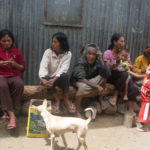
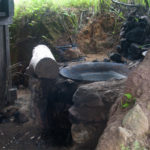

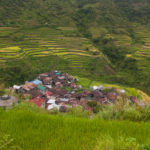
One thought on “Old Agricultural Practices in Mountain Province, Philippines”